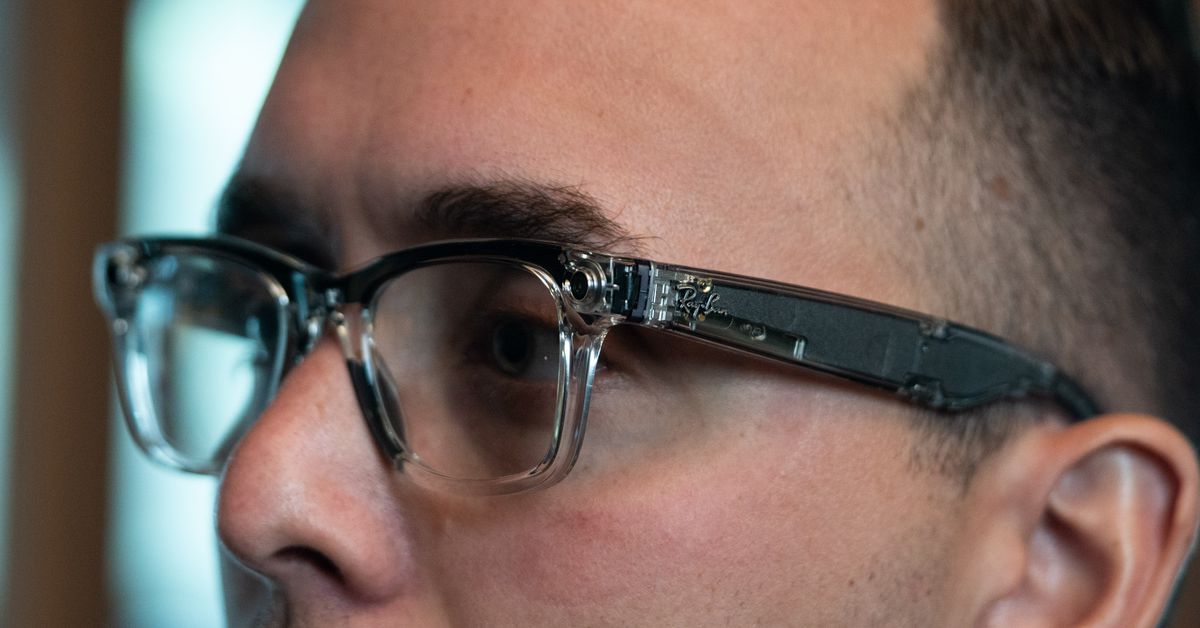See that little circle? That’s a camera. | Photo by Vjeran Pavic / The Verge
All around Meta’s Menlo Park campus, cameras stared at me. I’m not talking about security cameras or my fellow reporters’ DSLRs. I’m not even talking about smartphones. I mean Ray-Ban and Meta’s smart glasses, which Meta hopes we’ll all — one day, in some form — wear. I visited Meta for this year’s Connect conference, where just about every hardware product involved cameras. They’re on the Ray-Ban Meta smart glasses that got a software update, the new Quest 3S virtual reality headset, and Meta’s prototype Orion AR glasses. Orion is what Meta calls a “time machine”: a functioning example of what full-fledged AR could look like, years before it will be consumer-ready. But on Meta’s campus, at least, the Ray-Bans were already everywhere. It…
Continue reading…
Fuck this.
Google tried this 10 years ago and failed
They’re gonna keep trying again and again. Data at eye level is too valuable for these vultures. A company’s eventually gonna come up with an irresistible design that’ll reach a critical mass of adopters sooner or later. The only thing keeping this thing back so far is the obvious camera on their face.
i want screen glasses but not ones with a camera
Nope
Alphabet agencies 👍🏻 that
Pinhole cameras small enough to hide in glasses frames etc have been around for a decent while. The real changes are the continuing shrinkage of computing power, meaning that the footage can be stored and processed by the glasses themselves rather than communicating with a device over radio or requiring the user to remove a microsd to access the footage. Also increases in video quality possible with ever smaller lenses
Edit: basically, in terms of video gathering, intelligence agencies have been able to do this for generations. This really only is improvements in on board compute as far as they’re concerned, and potentially useful in shifting the public opinion about these devices (so they can use off the shelf stuff instead of “spy” stuff).
The thing that bothers me the most is that there’s a lot tech like thus could help with, but the problem is we can’t trust the companies or the states who are supposed to regulate the companies.
Like if we could actually trust the govenrment. We could have so much fancy shit.
You can trust the government. You can’t always trust the people voted in to government.
I’ll believe these will take off when I see it, as this has been tried before, and the questions of “use case” and “how does a user control it” still don’t have good answers in my opinion.
I’d love just a basic HUD in my glasses for stuff like messages from important contacts, walking directions sometimes, maybe a todo list, a calendar view… but any use case I can imagine would be enough work to control when it displayed or not that it would be just as easy to just pull my phone from my pocket.
Plus, from using VR headsets, there’s still a lot of room for better image quality when we’re using screens. A projector or transparent screen is going to have similar or worse limitations with resolution and clarity.
I don’t really see what smart glasses bring to the table that aren’t pretty adequately covered by my smartphone and smartwatch. I can take a quick glance at my watch as a message comes in and easily ignore it when I can’t look. Simple tasks can be done from the watch; more complicated things I’ll want to get out my phone (or maybe even computer). The smartwatch is less obtrusive and likely has better battery life, screen, and intuitive interface. There are plenty of times when I would not want a notification popping up in my glasses. I continue to not want to use voice controls except in very limited situations, like driving my car.
I remember that when Google Glass had its initial failure with the general public they continued to have use for years in job-related roles. I can see augmented reality having use-cases there, but the more I think about it I don’t see any use-case for augmented reality in everyday life that really improves on what I can already do. Sure, it sounds cool, but the reality seems worse than what we already have.
As for the cameras, there have already been camera glasses for years now. The quality continues to improve but the use cases for them seem pretty limited. I like roller coasters and while some parks allow people to record rides with action cameras, many do not. I’ve seen some people using camera glasses to get around those restrictions. Still, “secretly recording videos in places that are restricted” has some clear legal and ethical risks.
What will happen when even the minimal friction of pulling a phone out drops away, and billions of people can immediately snap a picture of anything they see?
Surveillance state. The surveillance state will happen.

Kind of a shitty episode, but a good reference.
Why not just use a pair of sophons?
What is that? Also, why am I seeing a countdown in the middle of my field of view?
I’m a glasses wearer and I just want a set of glasses with a bud. So I can look at the headlines, weather, etc in my field of vision
Great! Finally total transparency! Let’s start with Marc Zuckerberg and his family wearing such cameras 24/7 for - let’s say - at least 10 years. As a test. Just to show it really works that well. Right?







